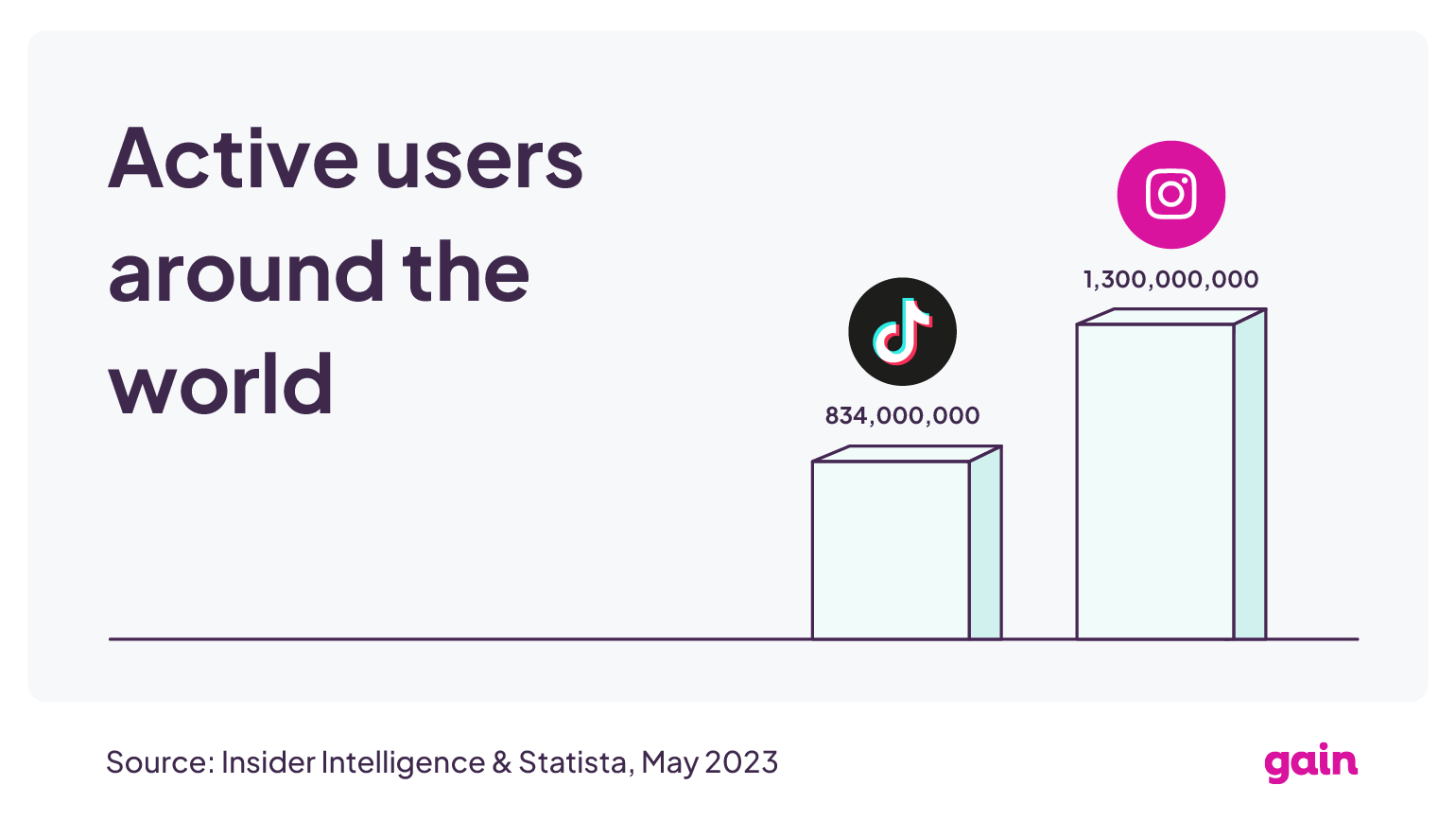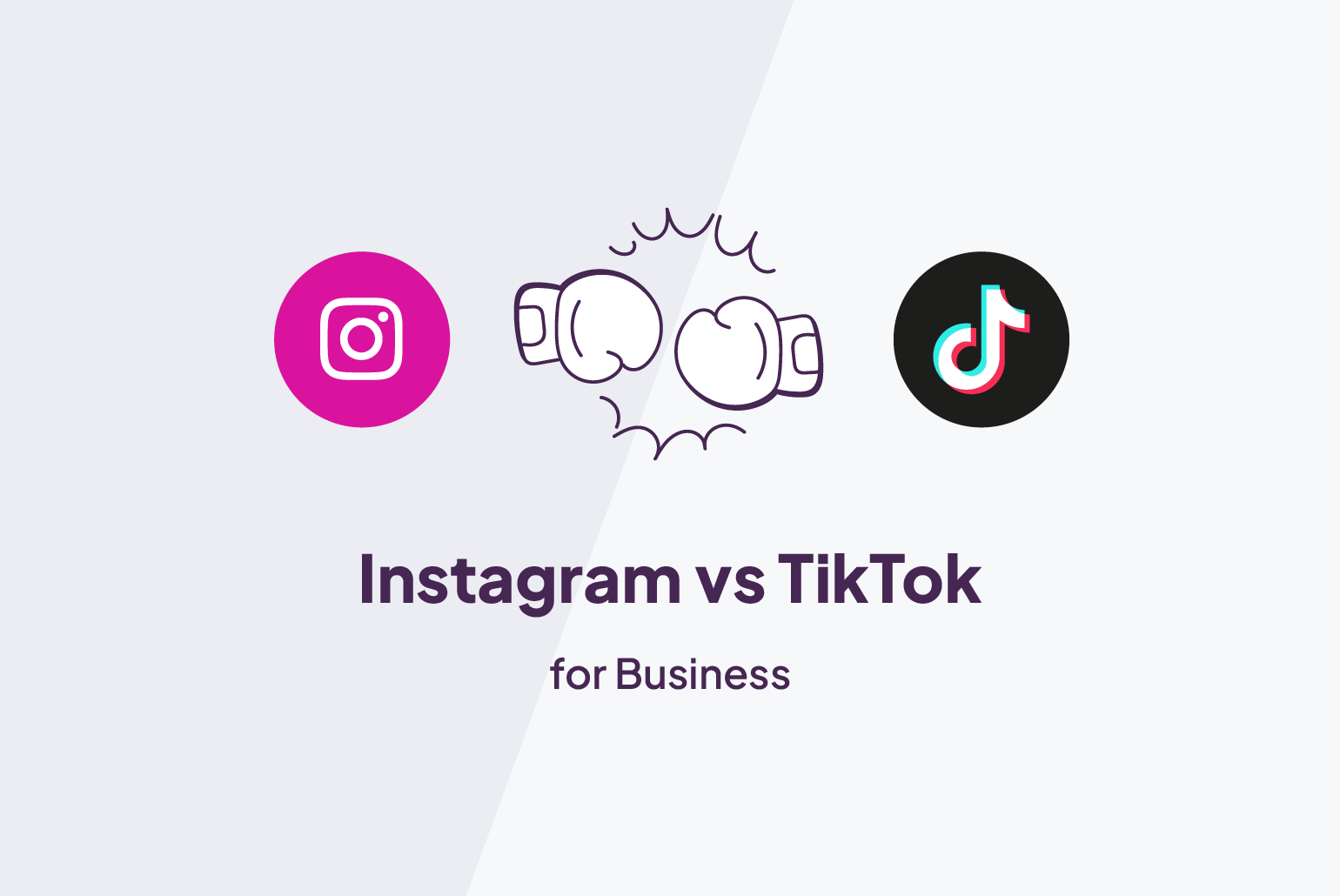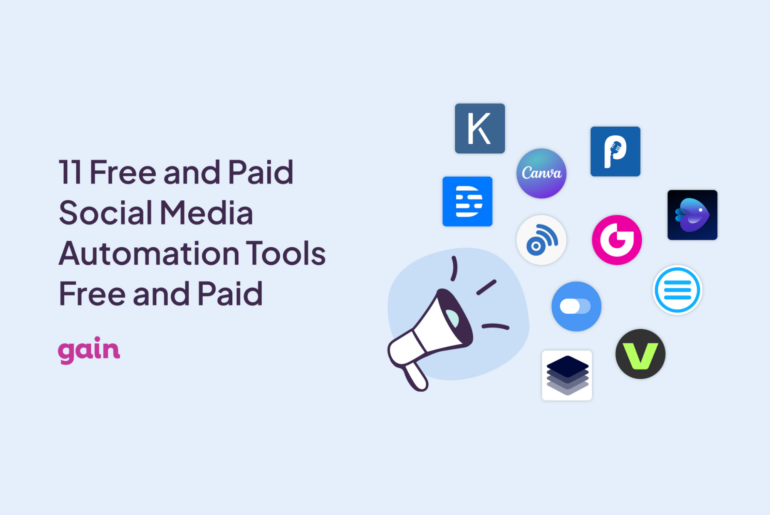In today’s digital age, social media has become an integral part of business marketing strategies. And with over 4.9 billion social media users worldwide, companies are constantly searching for the most effective platform to reach their target audience.
Two of the most popular social media platforms among businesses are TikTok and Instagram. But which one is better for your organization?
This blog post will highlight the key differences between the two social media platforms and explain how they can impact your marketing efforts.
Audience Demographics

When it comes to social media marketing, understanding the demographics of your target audience is crucial as it allows you to choose the right platform and tailor your content to resonate with your target audience.
The Power of TikTok
TikTok has taken the social media world by storm, and despite being a relatively newer app, it has become more popular among young generations than Instagram.
With its short-form videos and creative filters, which helped it become the world’s most popular mobile video app, TikTok has become a hub for Gen Z content creators as well as a platform for viral trends and challenges.
According to recent statistics, TikTok has over 834 million active users. Most of these users fall between the age group of 16-24 years, while the overall users on TikTok are roughly 57% female and 43% male.
Both TikTok and Instagram are popular in various countries. The United States, Indonesia, and Brazil are the top three countries with the highest number of TikTok users. On the other hand, India holds the top position for the most Instagram users, followed by the US and Brazil.
Employing TikTok for marketing is typically most successful when targeting younger demographics. For instance, a poll of people who used the internet in Canada in 2020 found that “only 9% of respondents aged 18 or above used TikTok monthly.”
Thus, brands targeting younger audiences can benefit from TikTok’s popularity and create engaging content that resonates with them.
However, it’s important to note that TikTok’s popularity is still relatively new, and the platform is still evolving. Brands that want to establish a presence on TikTok need to be agile and creative to keep up with the platform’s trends and changes.
Instagram’s Broader Appeal
On the other hand, Instagram has a much broader user base. With over 1.3 billion active users, the platform caters to a diverse audience, including Gen X and Baby Boomers, with 31% of global Instagram audiences aged between 18 and 24 years and 30% between 25 and 34 years, with more of a balance between male and female users.
Instagram’s popularity lies in its visual content, which has made it a hub for influencers and businesses alike. Furthermore, Instagram has also introduced new features like Instagram Live, Reels, and IGTV, which have made it more attractive as a platform for video content.
Content Format
TikTok and Instagram have distinct differences that can impact your marketing strategy when examining their content format.
For instance, TikTok, with its short-form, vertical videos, is perfect for businesses looking to showcase their creativity and fun side. The platform’s algorithm favors engaging and entertaining content, making it ideal for companies with a youthful and energetic audience.
Conversely, Instagram supports a wide range of content formats, including photos, videos, and stories. This versatility makes it an excellent platform for showcasing products and services in detail, especially for businesses with strong visual appeal.
That said, the content format you choose should align with your brand’s voice and messaging. TikTok is perfect for businesses looking to showcase their fun side. However, it may not be suitable for brands with a more serious or professional tone.
Similarly, while Instagram is great for showcasing products and services in detail, it may not be the best platform for businesses that offer intangible services or experiences.
Whether you choose TikTok or Instagram, the key is to create content that resonates with your audience and helps you achieve your marketing goals. Take time to understand the strengths and weaknesses of each platform. This way you can create a content strategy that maximizes your reach and engagement.
Examples of Companies Using the Platforms Successfully
e.l.f. Cosmetics
One of the most successful brands on TikTok was the cosmetic brand e.l.f. Cosmetics. The brand gained immense popularity on the platform by partnering with popular influencers and creating creative and entertaining videos.
e.l.f. Cosmetics was able to create a strong brand presence on TikTok by leveraging the platform’s unique features, such as music, filters, and effects. The brand’s #EyesLipsFace challenge went viral, with over 7 billion views becoming the most viral campaign in TikTok US history.
This challenge encouraged users to create their own videos showcasing the brand’s products, resulting in a massive increase in brand awareness and sales, helping it get rated the top beauty brand among Gen Z.
HelloFresh
HelloFresh’s home-delivery meal kit subscription business has extensively depended on cooperating with celebrities and macro-influencers to bring their brand in front of their target audience. The Refresh with HelloFresh campaign was recognized as the winner of the Best Food and Drink Campaign at the 2020 Influencer Marketing Awards.
Fifteen micro-influencers collaborated with HelloFresh for a 21-day challenge to prepare nutritious meals from scratch using HelloFresh ingredients. As part of the campaign, they’ve released a variety of culinary videos and photographs with the hashtag #RefreshWithHelloFresh.
HelloFresh’s campaign targeted the UK market, and as the majority of its customers are women (80%), it partnered with influencers to reach working mothers and young professionals.
With the sponsored posts and celebrity collaboration, the campaign received 5.5 million impressions from 461 influencer posts, and 20% of the influencers’ followers acknowledged HelloFresh on Instagram. Over 260,000 Instagram posts have been produced by the promoted hashtag #HelloFreshPics.
Features and Advertising Options
Both TikTok and Instagram offer various features and advertising options businesses can use to promote their brand and products. TikTok’s features include
- In-feed ads
- Branded hashtags
- Branded effects.
Instagram offers a range of advertising options, including:
- Story ads
- Sponsored content
- In-feed ads
- Shopping ads.
Instagram also allows businesses to promote posts, increase engagement, and reach new audiences using various features like hashtags, location tags, and user-generated content.
TikTok’s strong engagement rates make it a potentially fruitful platform for influencer marketing initiatives. On TikTok, micro-influencers get an average engagement rate of 17.9%, whereas, on Instagram, it’s a more modest 3.8%.

Cost-Effectiveness
While both platforms offer free accounts, businesses looking to reach a broader audience must consider advertising costs.
Interestingly, TikTok offers relatively lower advertising fees than Instagram. For this reason, it’s an attractive option for businesses with a limited budget. TikTok offers businesses a cost-per-view model, where advertisers pay only for views, making it an economical option.
On the other hand, Instagram offers businesses a relatively more sophisticated advertising platform with detailed analytics and insights into user behavior and engagement.
Despite the high CPC (cost per click) and CPM (cost per thousand impressions) on both platforms due to the abundance of impressions and low click rates, a case study revealed that Instagram Reels were more cost-effective than TikTok. Instagram Reels had a CPC of $28.08 compared to TikTok’s $35.72 and a CPM of $1.67 compared to TikTok’s $4.38.

TikTok’s strong engagement rates make it a potentially fruitful platform for influencer marketing initiatives. On TikTok, micro-influencers get an average engagement rate of 17.9%, whereas, on Instagram, it’s a more modest 3.8%.
Best Practices
Using social media platforms such as TikTok and Instagram to their full potential might be easier for companies if they follow established best practices. These include:
- understanding your audience
- creating visually appealing content
- using relevant hashtags
- collaborating with influencers
- engaging with the audience regularly.
Additionally, businesses can utilize social media management tools such as Gain to efficiently create, approve, and schedule content. Platforms such as Gain also provide social media analytics and insights, as well as a content calendar that facilitates the creation and publication of content on a consistent basis, enabling businesses to monitor trends and track their progress.
The Bottom Line
Choosing the right social media platform for your business is crucial to maximize your online visibility and reach new customers. Both TikTok and Instagram offer unique features and advantages, making them effective marketing tools for businesses.
Based on the above factors, businesses can choose the platform that best aligns with their goals, target audience, and budget.
It is important to note that companies do not have to restrict themselves to a single platform. They can take advantage of both TikTok and Instagram to develop a more comprehensive and diversified online presence, giving them a competitive edge.
Get Gain today to start posting and scheduling your TikTok or Instagram social media content.






